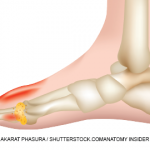Conclusion: In this phase 2 study, tigulixostat significantly lowered sUA levels in gout patients with hyperuricemia compared to placebo at all dose levels (P<0.0001), and sUA lowering effect of tigulixostat appeared to be dose dependent. Treatment with tigulixostat at all three dose levels appeared to be well tolerated by study participants.
Patient Perspective
Abstract 0668: Patient perspectives and preferences regarding gout and gout management: impact on adherence3
Chung MK, et al.
Patient-centered management is becoming increasingly important in gout, but few studies have explored patients’ perspectives and preferences. Chung et al. investigated patients’ perspectives and preferences regarding gout and gout management, and their impacts on adherence to urate-lowering therapy (ULT).
Methods: A paper-based survey was conducted among patients with gout seen at the rheumatology outpatient clinics of 16 tertiary hospitals. The survey included questions regarding demographics, comorbidities, gout attacks, current treatment and adherence, and patients’ perspectives and preferences regarding gout and gout management. Multivariate regression analysis was performed to determine the factors associated with ULT adherence. Results: Of 809 surveyed patients with gout, 755 (94.5%) were using ULT. Among those using ULT, 89.1% had ≥80% adherence to ULT. The majority of the patients knew management strategies to some extent (94.8%), perceived gout as a life-long disease (91.2%) and were making efforts toward practicing at least one lifestyle modification (89.2%). Most patients (71.9%) obtained information about gout management during their clinic visits. Approximately half of the patients (53.6%) preferred managing their disease with both ULT and lifestyle modification, 28.4% preferred ULT only, and 17.4% preferred lifestyle modification only. Adherence was better in older patients, those with better knowledge of gout management strategies and those who had a preference for ULT.
Conclusion: Patients’ perspectives and management preferences had high impacts on adherence to ULT in gout. Consideration of patients’ perspectives and preferences is important for achieving the desired clinical outcome in gout.
Keri Losavio is the staff editor of The Rheumatologist.
References
Refer to the ACR meeting abstracts for full details on all of the studies summarized here: https://acrabstracts.org.
- Yoshida K, Liu J, Solomon D, et al. Comparative safety of gout ‘treat-totarget’ and ‘usual care’ treatment strategies on cardiovascular outcomes using observational data: causal inference approach [abstract]. Arthritis Rheumatol. 2021;73(suppl 10).
- Terkeltaub R, Mune J, Lee J, Saag K. Phase 2 study results from a randomized, double-blind, placebo-controlled, dose-finding study to evaluate efficacy and safety of tigulixostat, a novel non-purine selective xanthine oxidase inhibitor, in gout patients with hyperuricemia [abstract]. Arthritis Rheumatol. 2021;73(suppl 10).
- Chung M, Kim S, Cheon Y, et al. Patient perspectives and preferences regarding gout and gout management: impact on adherence [abstract]. Arthritis Rheumatol. 2021;73(suppl 10).



